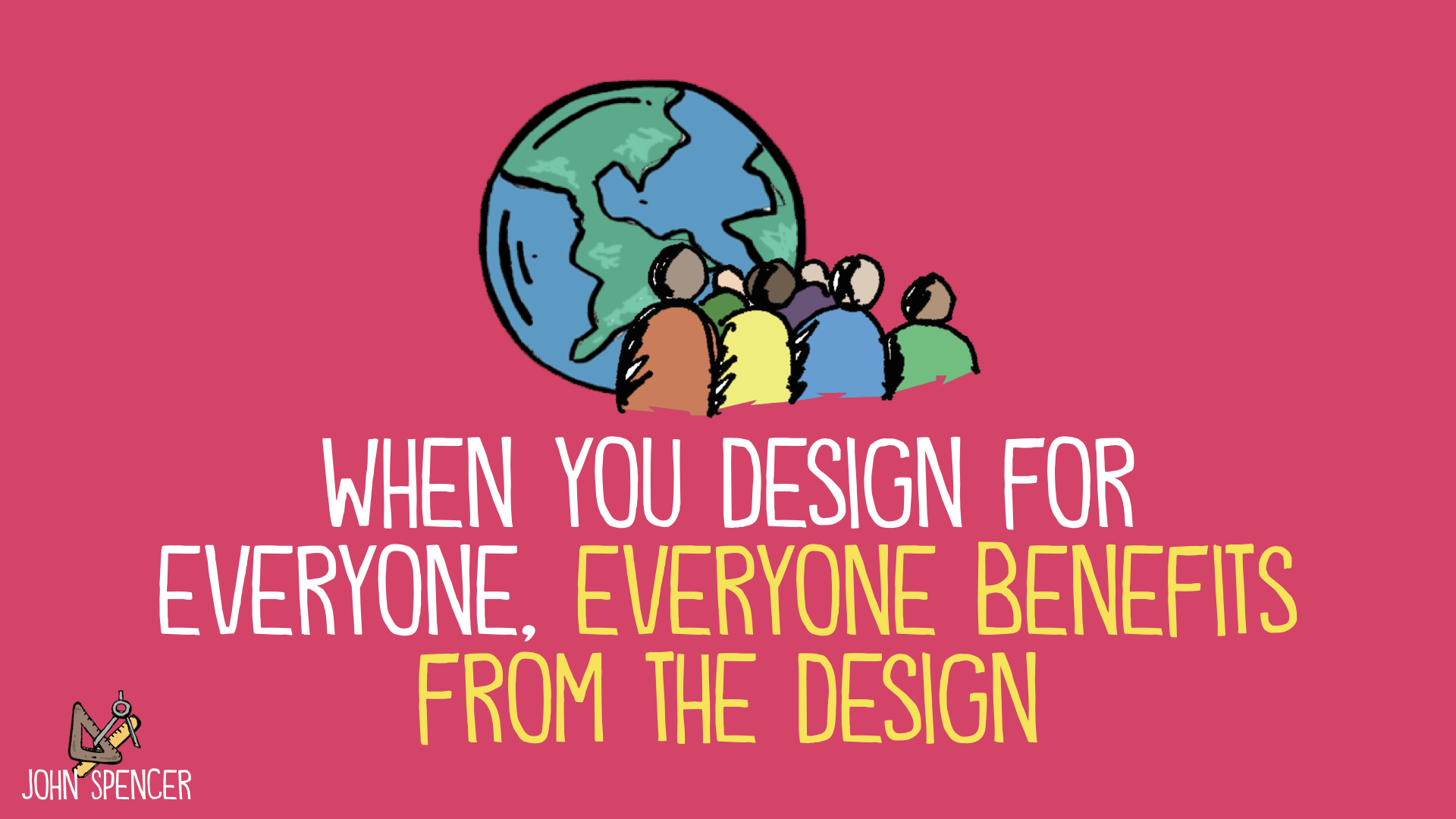“Imagine you have to plan and cook a meal for a group of visiting teachers from across the EU. You have no information about them at all, so you go ahead and plan an Irish-style dinner with: Dublin Bay scallops au beurre, Irish Beef and Guinness pie, Lemon Torte and Raspberry Coulis. It sounds lovely but then your guests arrive and one tells you she is a vegetarian, another that he is gluten intolerant and another that she is allergic to dairy products. So there goes your menu and you are left frantically searching around the kitchen trying to find last-minute alternatives, and decrying all these food fads that have totally upset your dinner plans. Would it not have been easier to have designed the menu with these food intolerances in mind and built in alternative menu choices on the assumption that in a group of 20 people someone will have a food intolerance? “
(Heelan, 2015, para. 1-3)
As quoted above from Heelan’s (2015) work, students in the education system come with diverse needs, and how to address them might vary accordingly. In order to do this, Universal Design for Learning (UDL) has been introduced as an educational framework that seeks to accommodate the diverse needs of all learners.
Universal Design for Learning was developed over 30 years ago by the Center for Applied Special Technology (CAST) to improve teaching and learning by addressing the diverse needs of all students. The concept of Universal Design for Learning (UDL) emphasizes accommodating the diverse learning needs of individuals and promoting advanced learning strategies. It has three core principles: multiple means of engagement to create purposeful, motivated learners, multiple means of representation to develop resourceful, knowledgeable learners, and multiple means of action and expression to support strategic, goal-directed learners. (Dalton, Pérez, Grant, & ISTE Inclusive Learning Network, 2016, p. 12)
Application of UDL
The application of UDL in the classroom involves providing multiple means of engagement, representation, and action and expression.
Uses of UDL
UDL has many applications in education. It provides a framework for developing curriculum objectives, assessments, and teaching methods that are both effective and inclusive for all students. By taking into account the diverse needs of learners from the outset, UDL helps educators deliver standardized education suited to individual needs, thereby promoting a more inclusive learning environment. (Posey. n.d.)
Challenges to Application
Although applying Universal Design for Learning (UDL) has numerous advantages, it is challenging. One major challenge is ensuring that all educational materials and activities are designed flexibly. Moreover, there may be resistance to changing traditional teaching methods and assessments to conform to the principles of UDL. Also, continuous professional development is necessary for educators to implement UDL in their classrooms effectively. (Posey, n.d.; Almumen, 2020)
UDL represents a shift towards an educational model that values diversity and inclusivity. By recognizing and planning for the wide range of learner needs, UDL can help to create a learning environment where all students can thrive. As education continues to evolve, UDL offers a promising pathway toward truly equitable learning experiences for all.
References
Almumen, H.A. (2020). Universal Design for Learning (UDL) Across Cultures: The Application of UDL in Kuwaiti Inclusive Classrooms. SAGE Open, 10. DOI: https://doi.org/10.1177/2158244020969674
CAST. (2018). Universal design for learning guidelines version 2.2 [Graphic organizer]. Wakefield, MA: Author. Retrieved from https://udlguidelines.cast.org
Dalton, E. M., Pérez, L., Grant, K., & ISTE Inclusive Learning Network. (2016). SOOC: Addressing varied learning needs through online professional learning and UDL. In J. Santiago (Ed.), Journal on Technology and Persons with Disabilities. California State University, Northridge.
Heelan, A. (2015). Universal Design for Learning (UDL): Implications for Education. Universal Design in Education. Dublin, Ireland, 12-13 November. Retrieved from https://arrow.tudublin.ie/cgi/viewcontent.cgi?article=1000&context=exdesthe4Posey, A. (n.d.). Universal Design for Learning (UDL): A teacher’s guide. Understood.org Retrieved from https://www.understood.org/en/articles/understanding-universal-design-for-learning

Leave a Reply